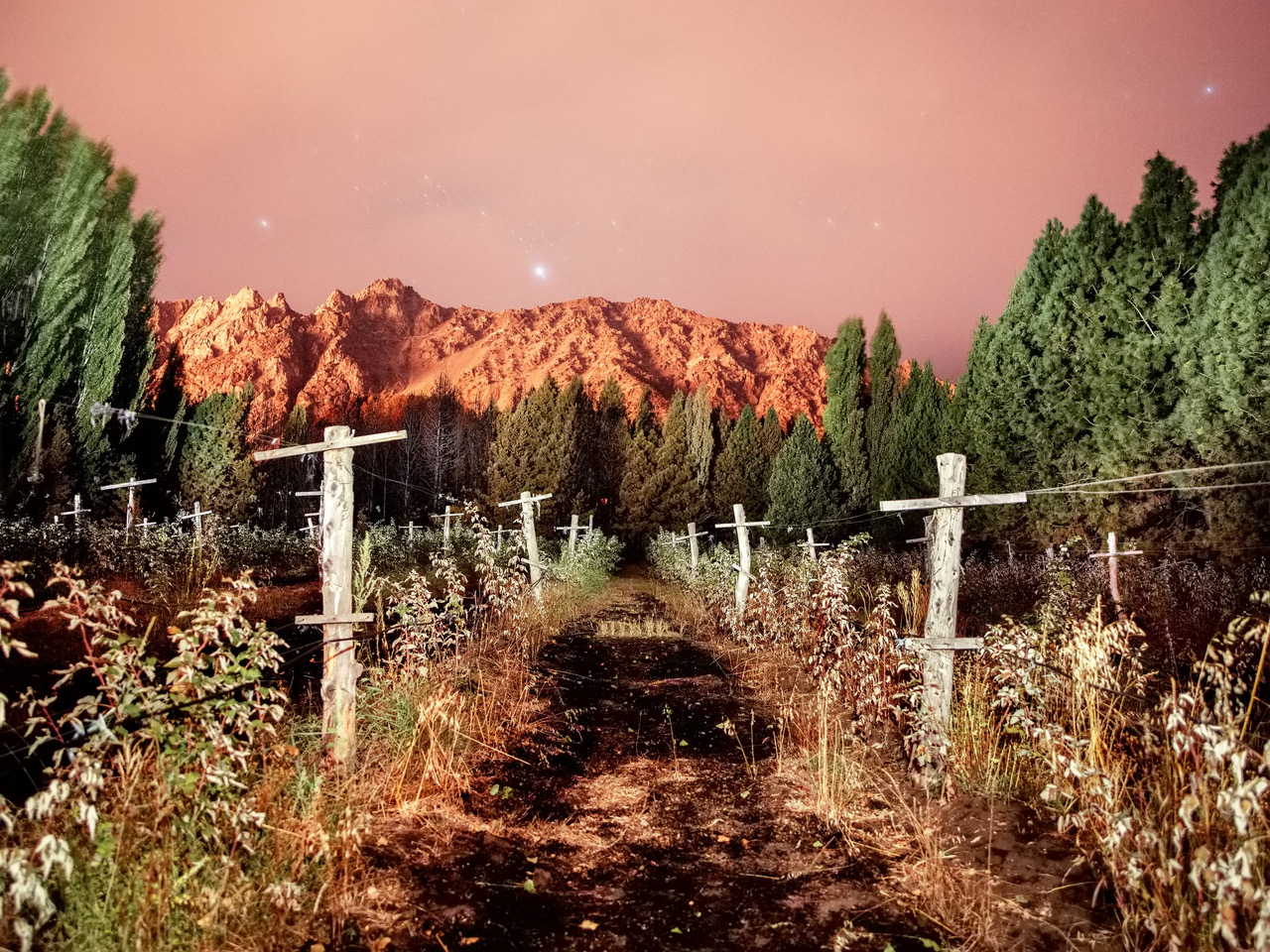The Argentine photographer Alejandro Chaskielberg spent his quarantine with his daughter in a small house in a forest in El Hoyo, Chubut, southern Argentina. In the midst of the pandemic, he built a three-meter torch with iron and rags and flamed it in different Patagonian landscapes. He photographed the process in bulb mode, with high exposure and wanted to express the need to “burn out the old normality”. And it is that in the winter of cold Patagonia, fire is an ally. But, in summer, the same element becomes a real danger. “It is the paradox of fire,” Alejandro says.
This year’s fires in the Andean Region of Parallel 42 (near where Alejandro lives) were violent. For Alejandro, “the story of the fire cannot be told only from the fire, it goes much further, it is a disputed territory and it ends up burning: that is the story.” The tension is between real estate interests, the need for housing, tourism, hippies, Mapuches and businessmen.
The most devastating fire occurred on March 9, in the middle of the summer drought and winds of 100 kilometers per hour: “It was the most destructive on a population in Argentine history: in seven hours were burned six thousand hectares of forests and between 300 and 500 houses”, he says. Trained in documentary journalism, Alejandro did not hesitate to take the camera and go out to record.
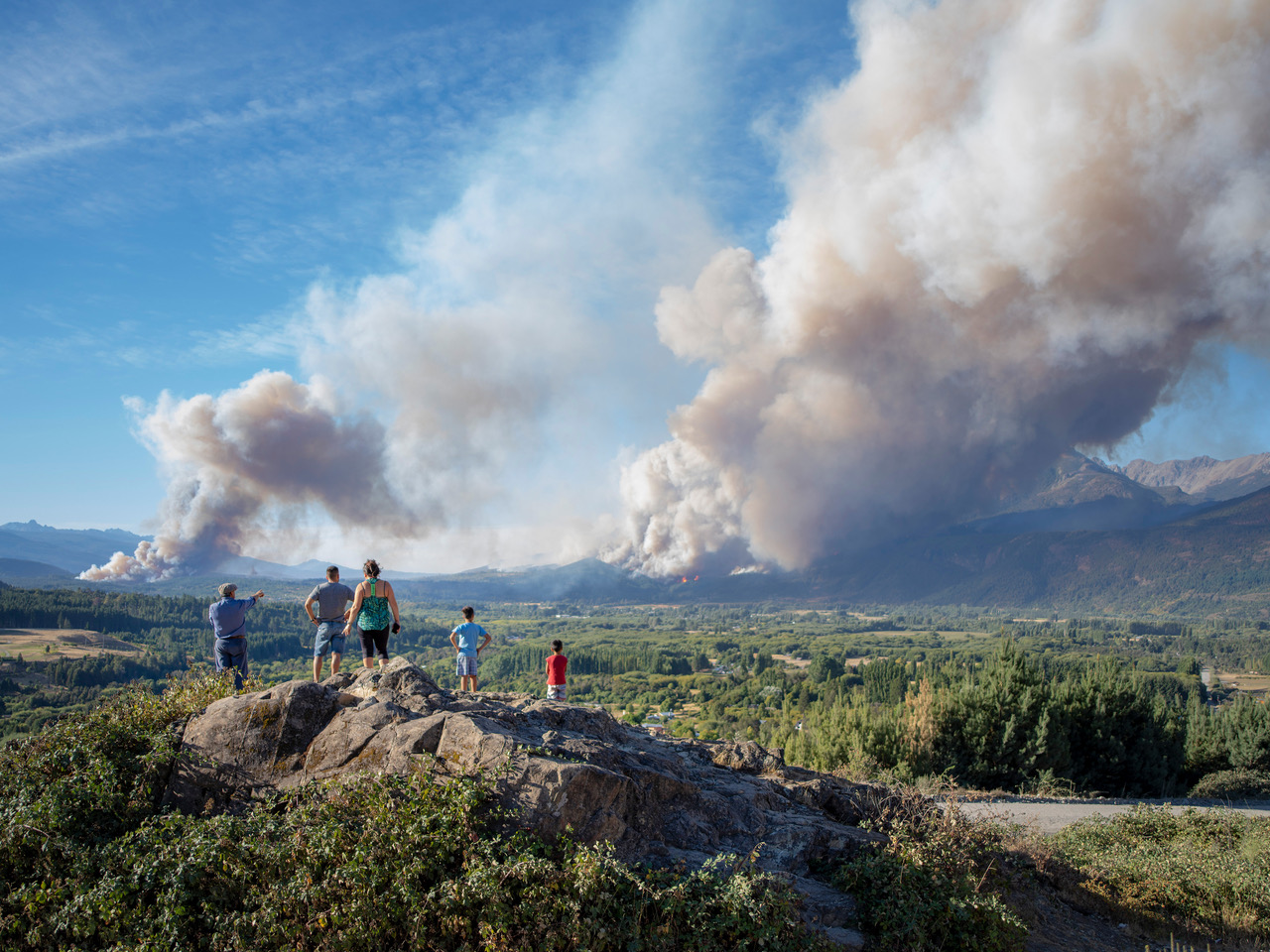
That day he was afraid: the fire crossed the road and he was afraid of being isolated, not being able to return to his house where his daughter and his partner were. Finally, by an alternative path by which he was picking up stranded people, he was able to return. They filled the car with the most important things, accepted that many others might turn to ashes. They were full of adrenaline.
Finally, as a kind of miracle, that night it rained. The fire was only two kilometers from his home, but hundreds of others had all their belongings burned. Now, with community work, they are trying to rebuild the houses against the clock. They have to end before the rains arrive and, with them, the winter of one of the southernmost areas of Latin America.
The announcement of the strict quarantine found you in a small house in a forest, with your daughter, what were you working on?
I was traveling through Patagonia, photographing for a project that I wanted to start on the territory. I had planned for my daughter to start school later because of this project. When the restrictions on movement began, we decided not to return. I like to photograph nature and in Buenos Aires I was not going to be able to. I prioritized continuing to work and keeping a pandemic journal with the experience of living in an RV. I think it was one of the best years of my life, living in a forest, connecting with the place and the animals, which I had never photographed so much. It was a very refreshing experience. Later we moved to a bigger house, now we are more comfortable and the idea is to continue here a little longer.
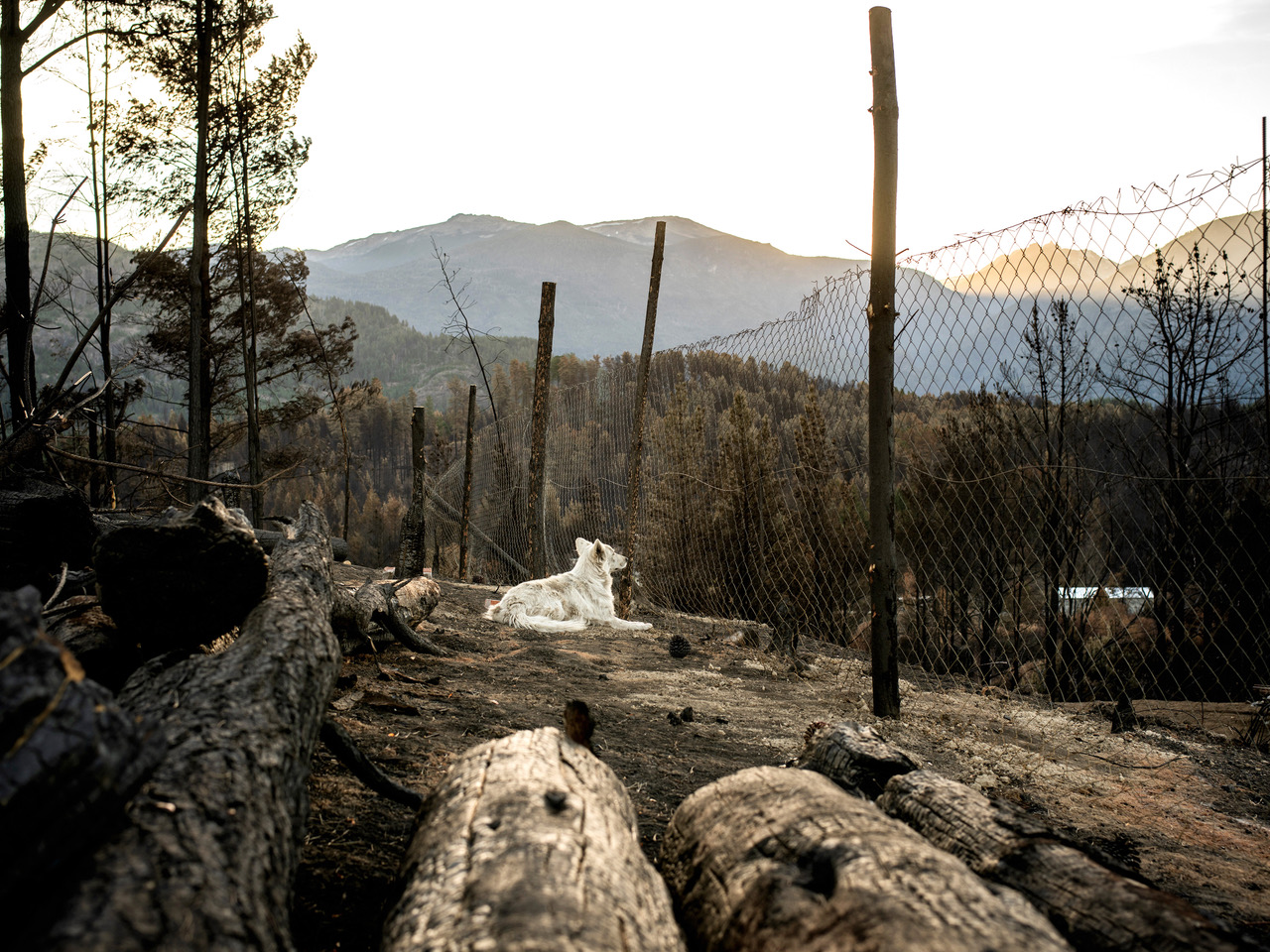
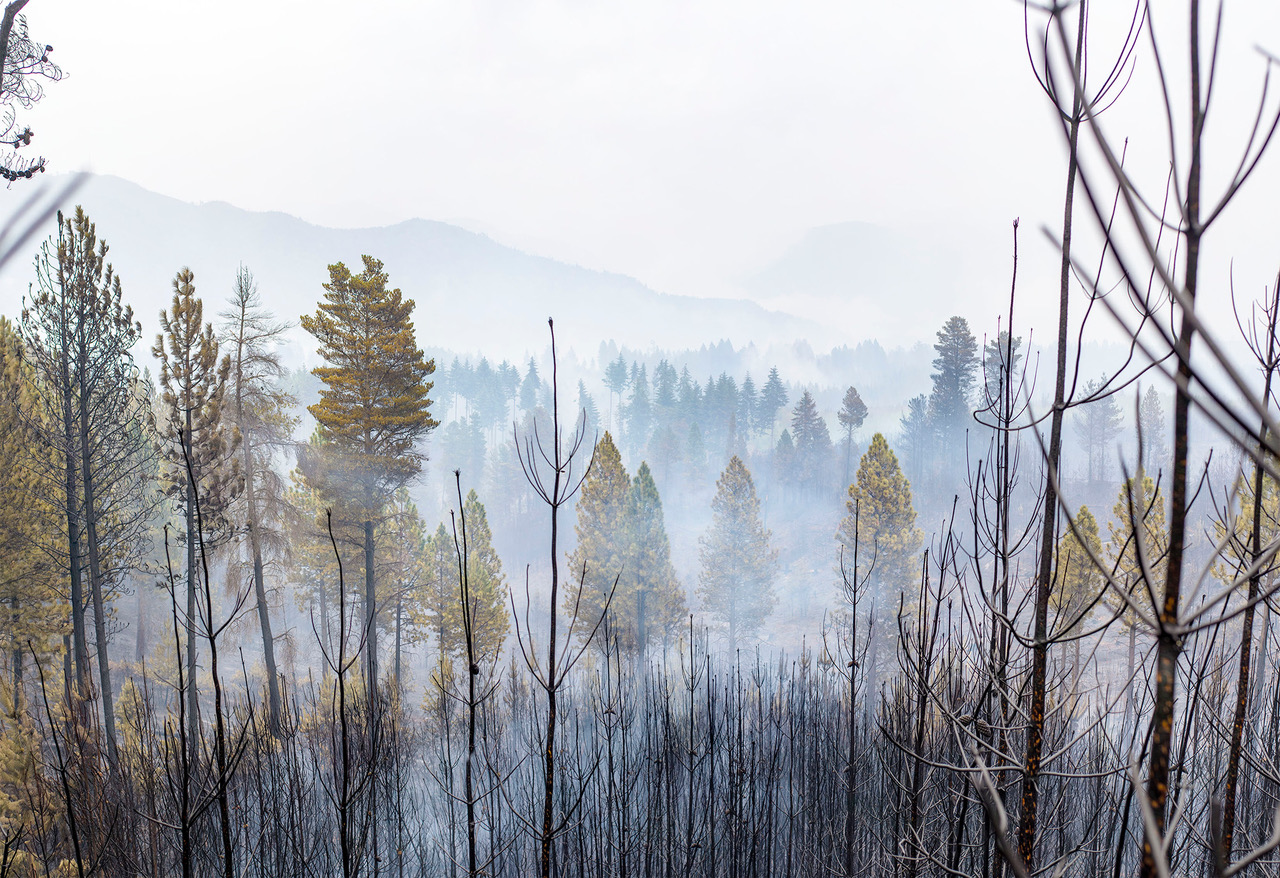
How were you thinking about work in everyday life?
The work I did last year (Nature-e) refers to an electronic or digital nature. It originates from the feeling I had of being free, when most people were confined to cities having contact with nature only through screens. I started this idea of screens at Pixel, a job in which I illuminated with cell phone screens as light. I continued to alter with color and always thinking about the idea of a nature transformed with the screens.
I wrote with flashlights words that have to do with a universal vocabulary, words that everyone knows, linked to information, connection to networks, the exchange that happens there. Parallel to these images are those of the experience living with my daughter in this place, the animals and the situations that we faced.
Unlike other jobs, in this case you were posting onnetworks instantly.
Yes, the novelty is that I was publishing images as I was photographing them. It became a kind of diary of what everyday life is like. Generally one processes a lot of images and builds the story from editing. Here the editing was minute by minute, there was a continuous line of photographs that happened one next to the other. Published chronologically, they give an account of the processes that one goes through in the place. For example: I started with the animals, then the fires, because winter started. I made a torch three meters long, with irons in the shape of a “T”. I put rags on it, I set a fire and I carry the torch in the air, it does not touch the ground, it is a line of fire that, with exposure time (photographing in a bulb), is printing. They remain like rivers of fire.
I was moving it in different landscapes, it was a metaphor for that feeling that I had to renew, to burn the old normality. I started working with fire and then the words appeared with a book that I started to write freehand. Fire, here in Patagonia, is a fundamental element, super necessary in winter. Much of the area is heated by fire. In summer, it is a terrible element, the worst enemy.
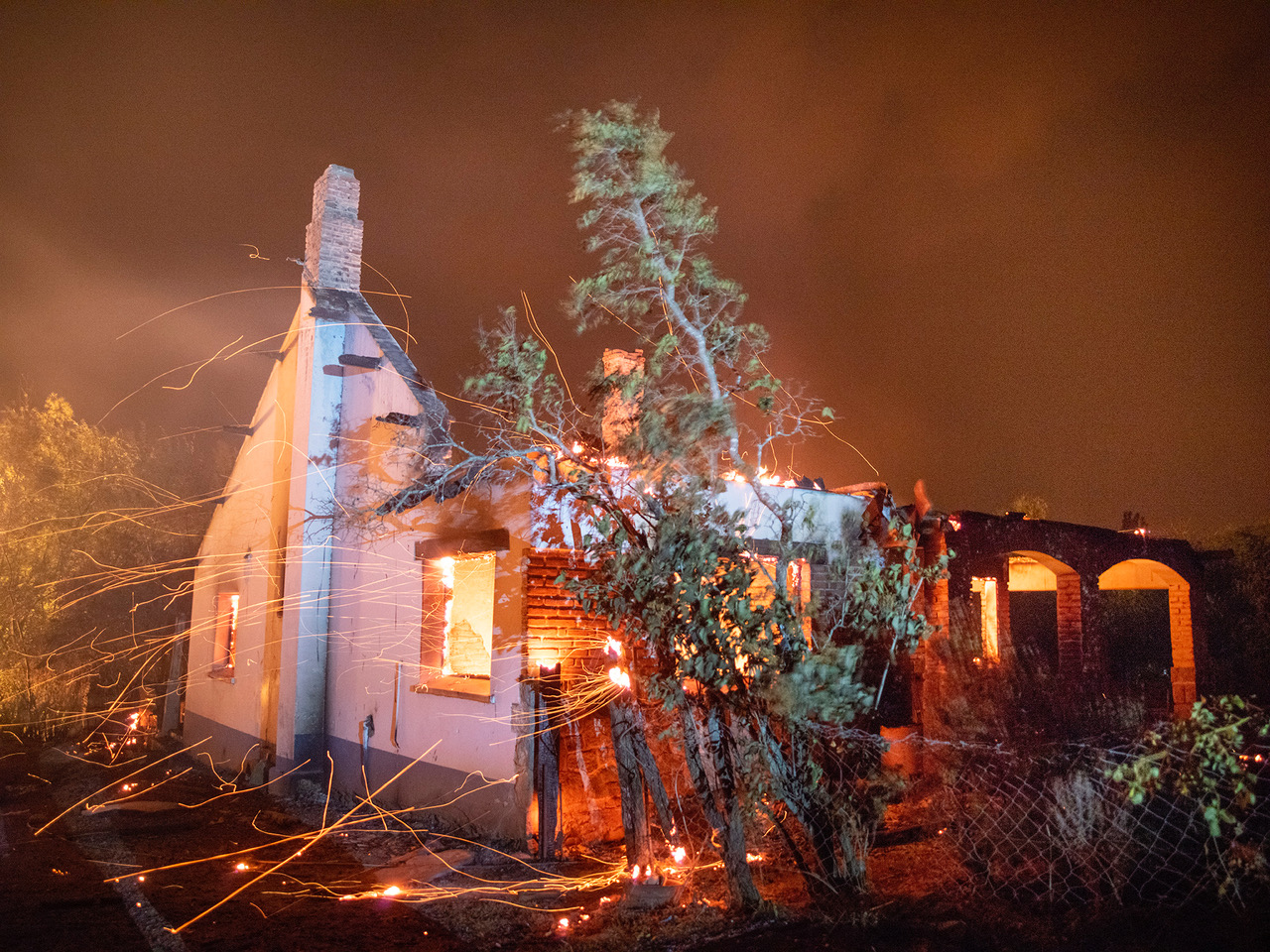
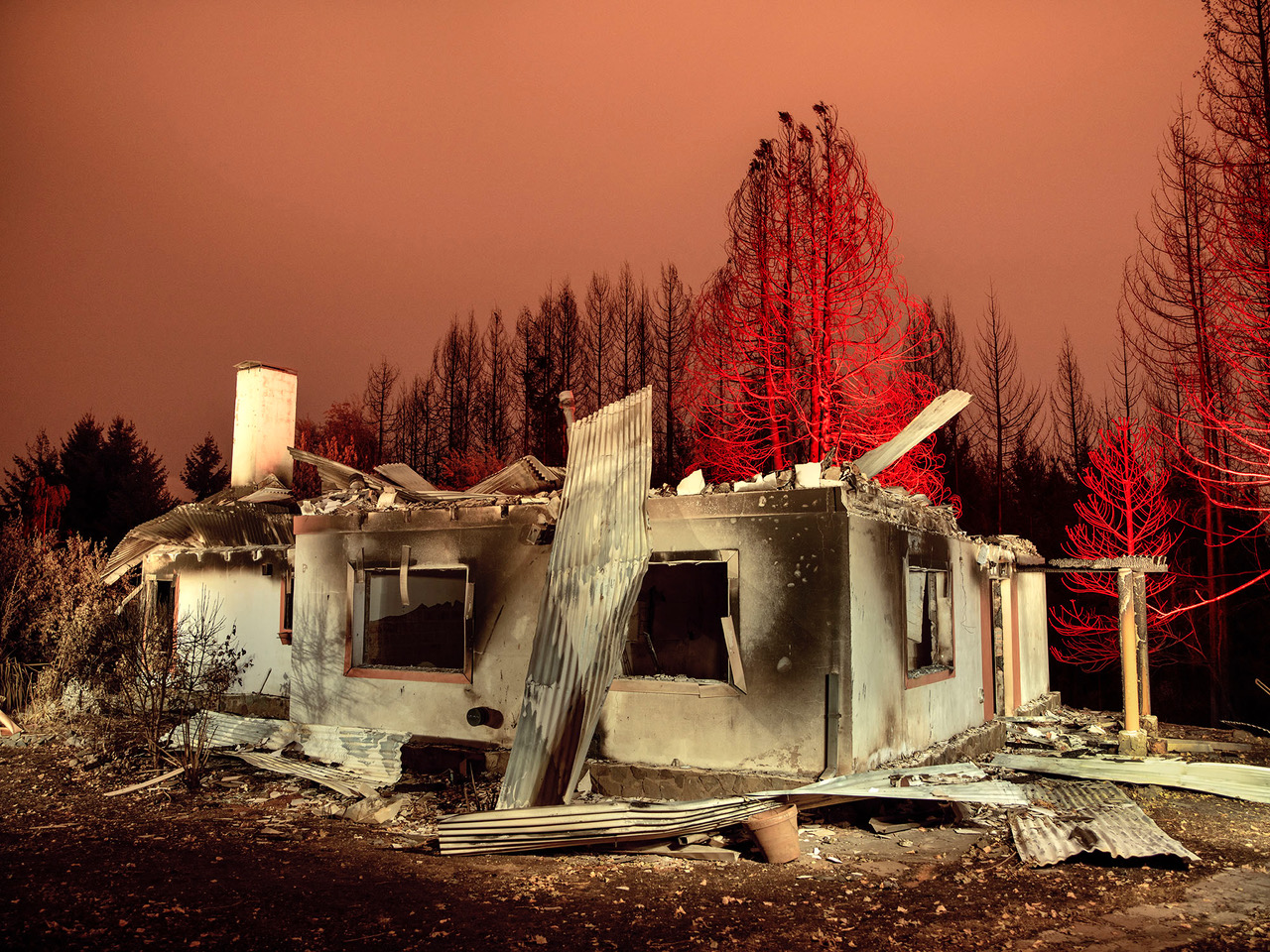
… a metaphor for that feeling I had of renewing, of burning the old normality.
What was the most recent fire there? How did you find out what was happening?
I saw it from my house, it came to where I am. It was so devastating that we didn’t have to go looking for it, it came in a furious way, it was impossible not to see it. The fire moved very fast on March 9th, a lot of seasonings were put together which made it devastating. Mainly, a north wind that came from El Bolsón (we are at south) at 100 km/h. Also, it was at the end of the summer, when everything was dry.
At that moment, in a matter of 4 or 5 hours the fire advanced 10 kilometers and ended 2 or 3 kilometers from my house. It was a matter of time before it arrived. If it hadn’t rained that night, it would have ended up burned.
When I saw the fire I had the instinct to record it. I like the record, the document. This fire was the first that, with the naked eye, the flames were seen and that it came from an area where there was a population. It seemed to me a valid document to show what was happening and from where I am I have a privileged view, like a lookout point. Shortly after recording the fire, the second source appeared and I made the recording of those first minutes. Then they asked me from a lot of places to study the phenomenon of fire: the municipality, firefighters, rescuers.
I was trained in photographic reporting and documentary photography. So, somehow, my first instinct was to go photograph. I left my daughter and partner at home. At that time there was still no danger. I approached the fire, to Route 40. When I got there the fire crossed the road and I couldn’t go back the way I had gone. I was a little scared because I was afraid that the fire would isolate me and that I would not be able to go home. I went back an alternate path rescuing people who had been left walking around and were choking on smoke.
When I got home, we had to prepare things to leave, we experienced that adrenaline rush of being ready to flee. We grasp what is important. Some things of value didn’t fit in the car and we said, “well, this will burn.” The door of the house was closed by a strong wind, we were outside. I left everything ready, I went to work again. Soon the rain set off, it was miraculous. There it went out.
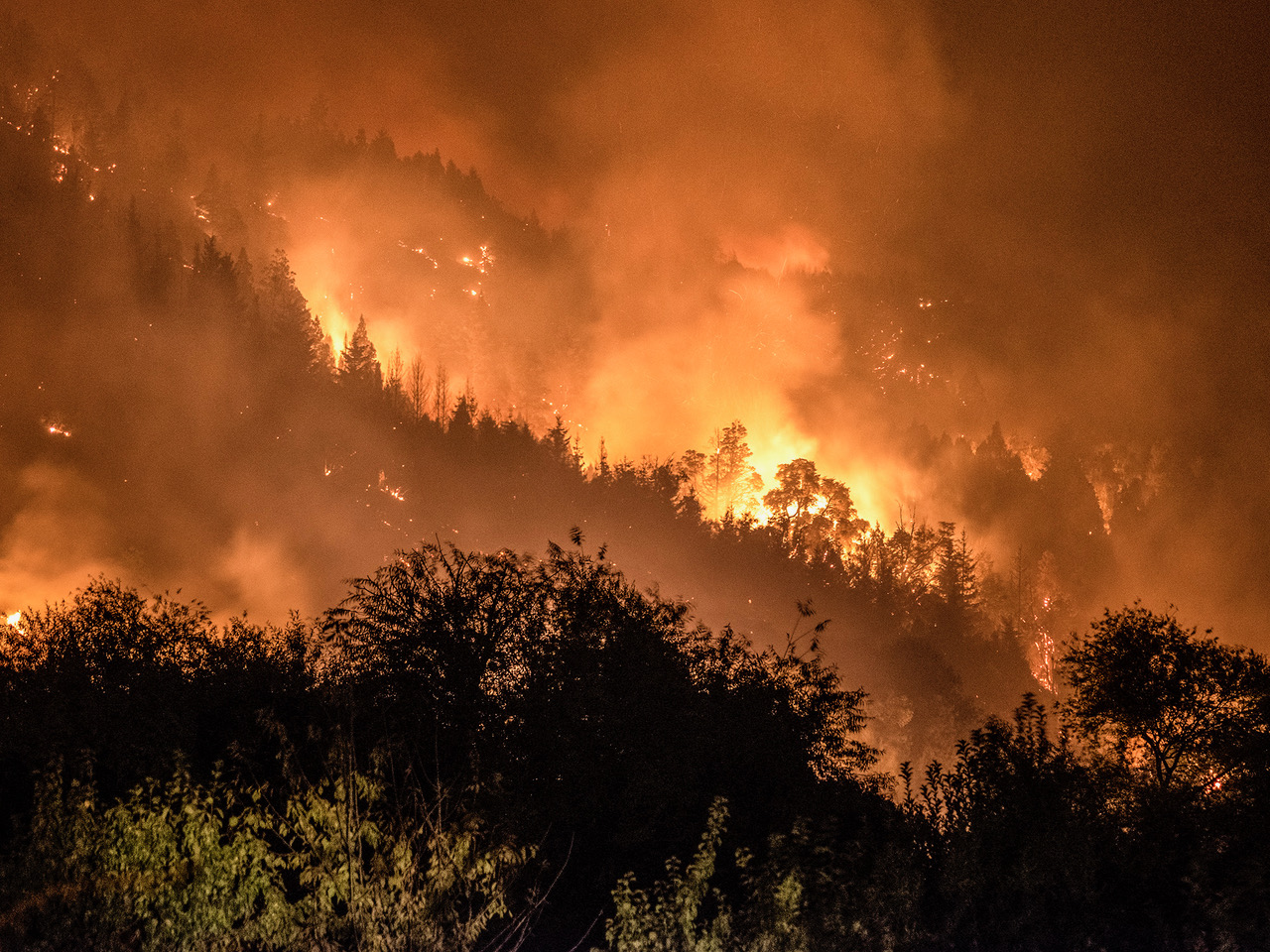
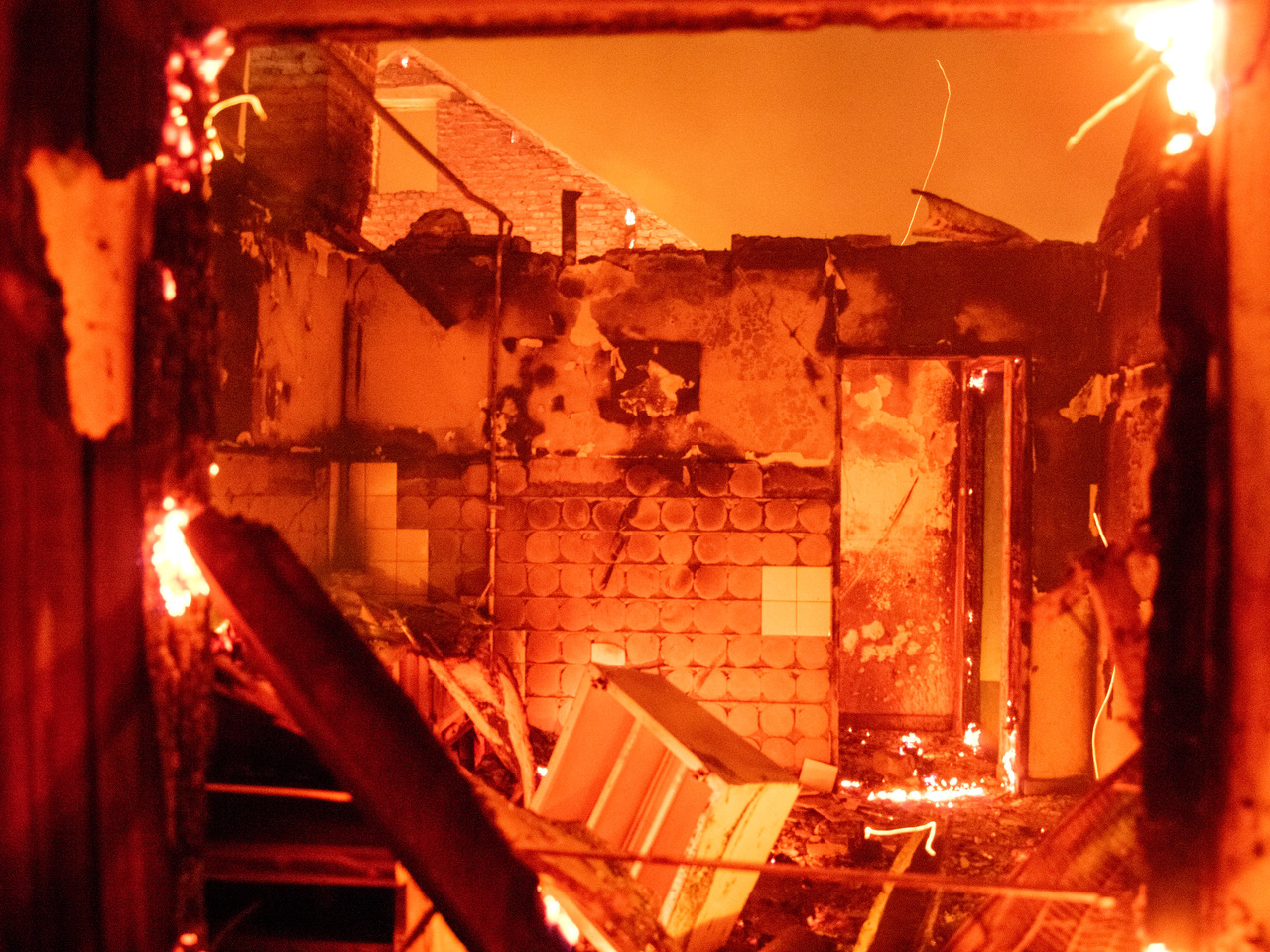
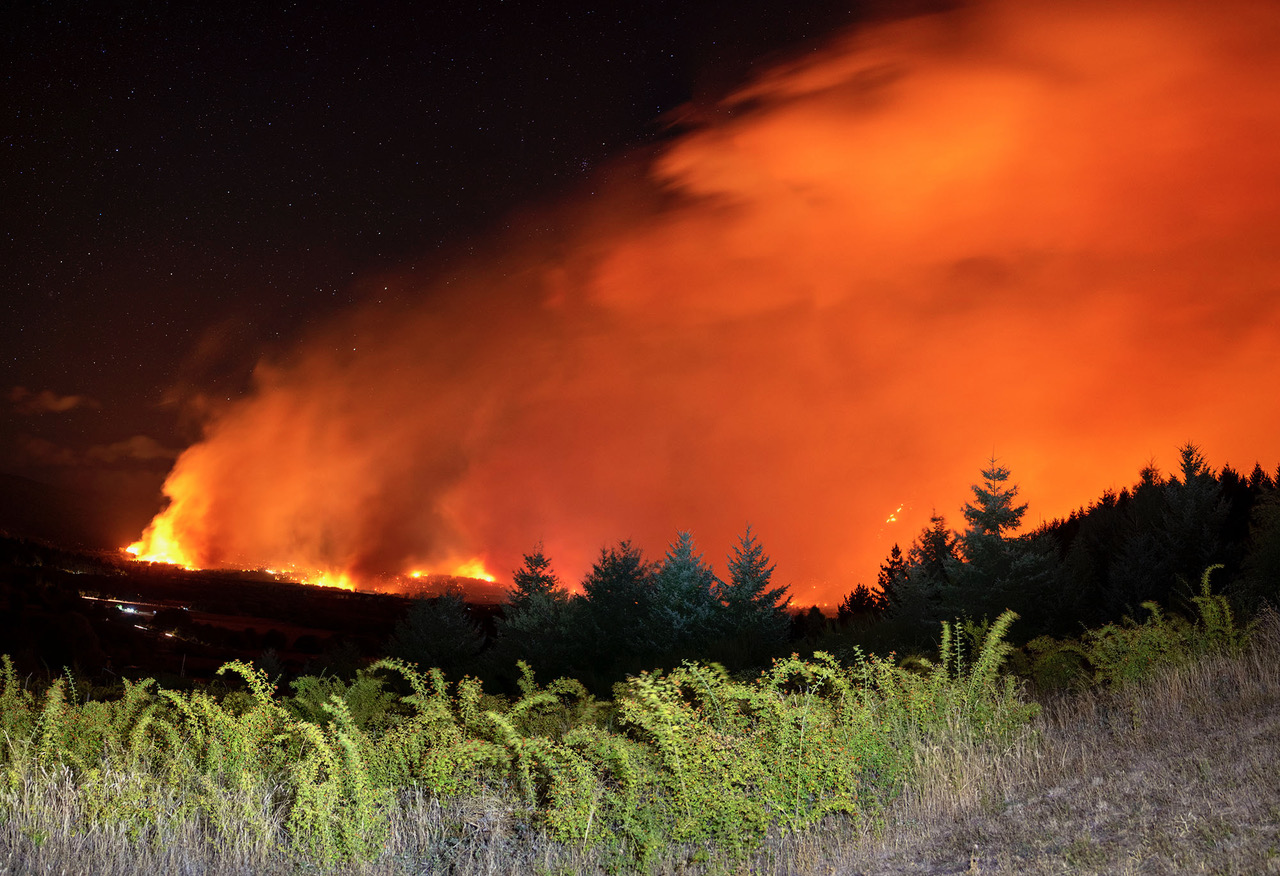
Fire is the symptom.
When you went to work on the aftermath of the tsunami in Japan, the news had happened a year ago. In this case, the news is happening while you register it. What differences do you feel at work?
I think the difference between one project and the other is how the story is put together. In Japan, clearly the news had already happened, it had been the tragedy and the deaths. I had to put together a story with the elements that were left. Not having the spectacle of the tragedy in front of the camera, I had to think about what was the valuable story to tell. In that sense, I was working with the consequences of the tsunami. In the process of the project, I realized that there was another type of non-material damage that was the aftermath that the tragedy had left due to the number of deaths. Every person I knew had a deceased friend or acquaintance. I worked using photography to reflect on the memory, loss and value of the photographic in a context of tragedy.
In this case I was at the time of the news. That somehow completes the story. But the story of the fire cannot be told only from the fire, it goes much further. The fire started a long time ago. One might think that the story is the fire, I try to keep thinking about what it is. It is a territory that the whole world disputes and that ends up burning: that is the story.
One realizes that when the fire starts the cross accusations begin: everyone thinks it is intentional and everyone accuses another subject or community of causing this fire. There is a lot of conflict with the issue of territory here, there are residential areas that were burned; others that were shots from about 15 years ago; there are areas of more recent occupations that were burned.
There is a conflict over territory, people left , who lived inside a pine forest, which is the same as living inside a matchbox. Without water, without being registered, without maintenance. That was the perfect fuel.
I’m not interested in who began the fire. It does not seem fundamental to me. The story is that it is a territory that has been disputed for a long time. Fire is the symptom.
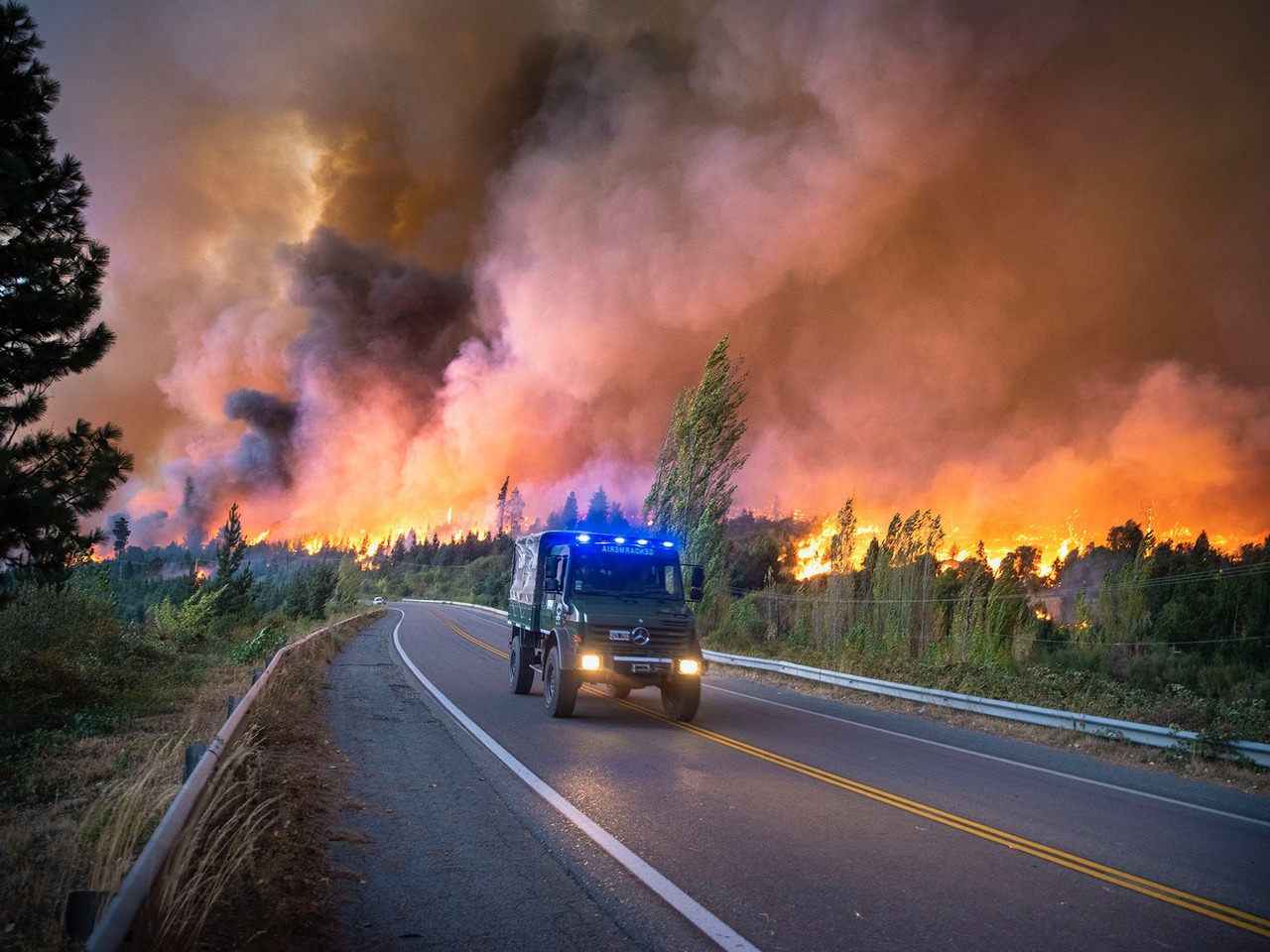
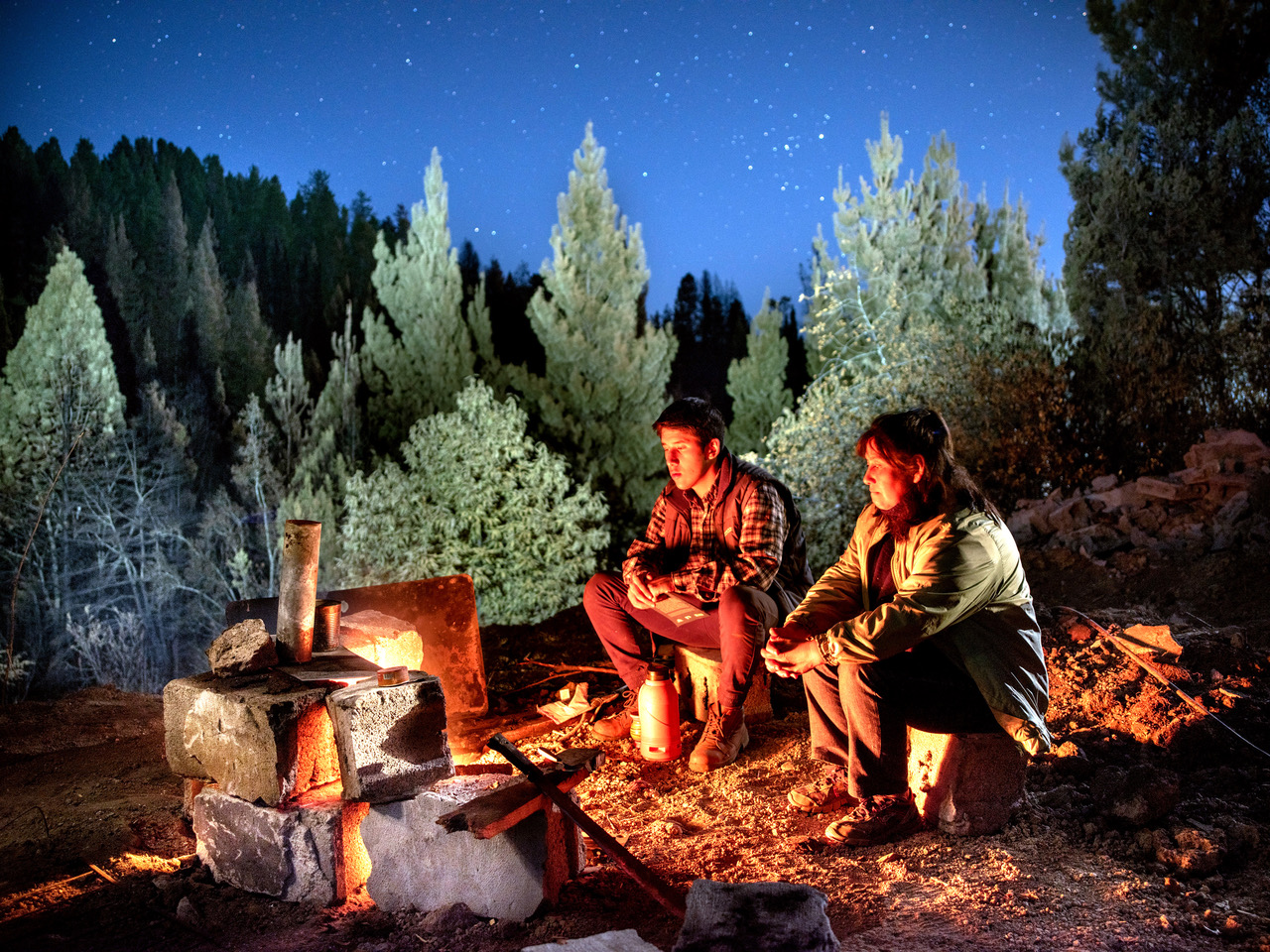
Now they are in a rebuilding stage, right?
People are working non-stop because in a month the rain and cold begin. It is a time when you can hardly build. There are still a lot of things that it is not known how will happen, because from the fires there is a change in the composition of the earth, a lot of trees had to be cut down. That makes them have less grip and there may be collapses, such as the Ecovillage, the intake of the Pinar, Parcel 26. They are non-established neighborhoods that do not have streets. Nobody knows what will happen with the rains, how the streams will change. There is an issue in these structurally informal neighborhoods that it is very difficult to program where to put the houses. Many are being done in a precarious way so that the rains do not catch them. There is a question that has to do with the help that people who are not “inside” the system receive. The rental houses were given to those who have title to the property. They are not giving help to people who do not have it, there is a political problem.
In the middle, there are a lot of people helping, donating materials and labor, against the clock. It must be done now. I am traveling a lot, there are people who have decided to leave, older people who do not want to start again, people who have already suffered other fires. Many others have had the opportunity to occupy land and build a precarious house. A girl told me “now I’m going to have a house with a good roof, before I was putting it together with patches”. What is most needed are donations, construction materials and, above all, labor. If someone is planning to take a trip, add that they come for a few days to help put up a roof or a door.
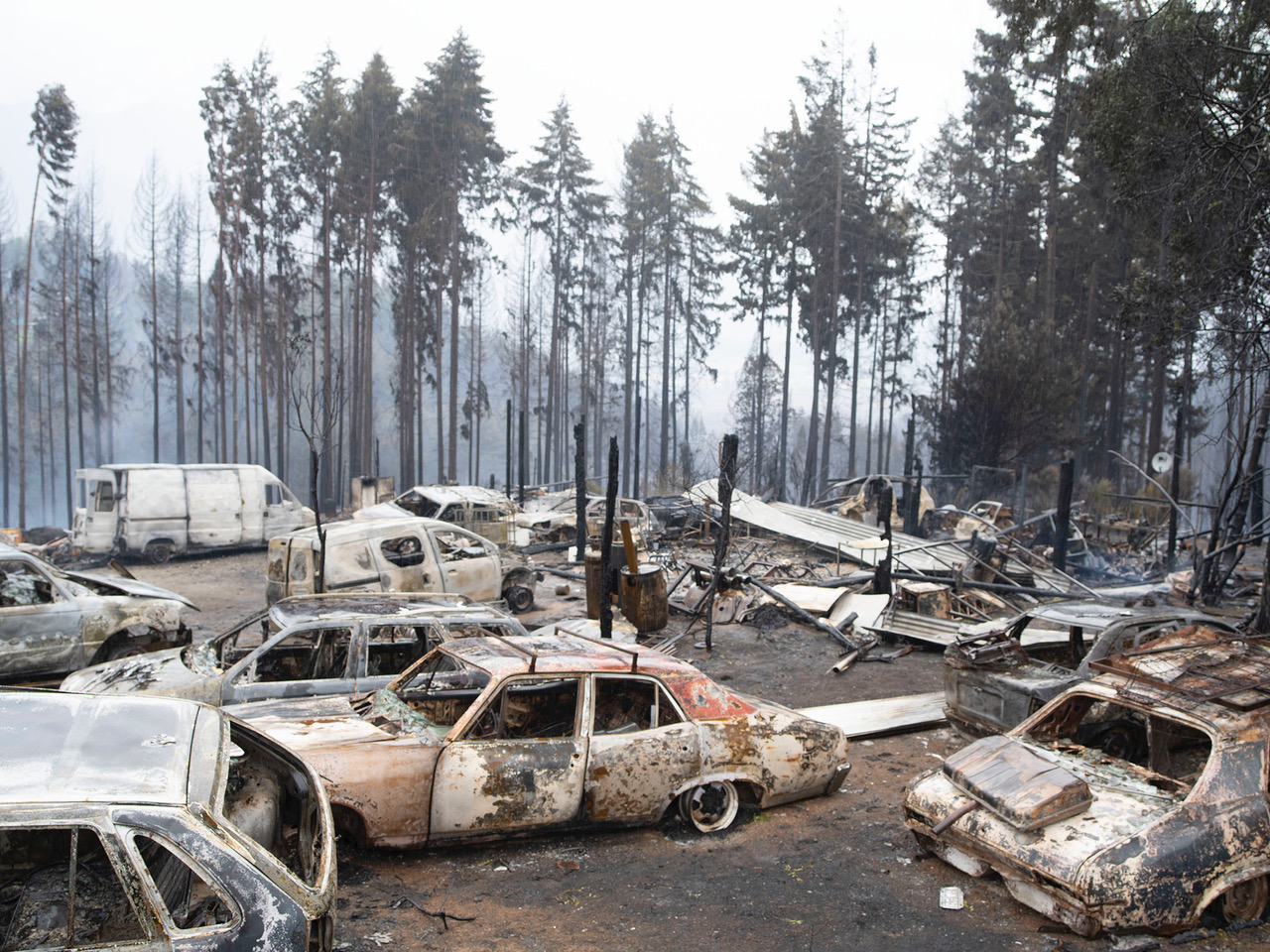
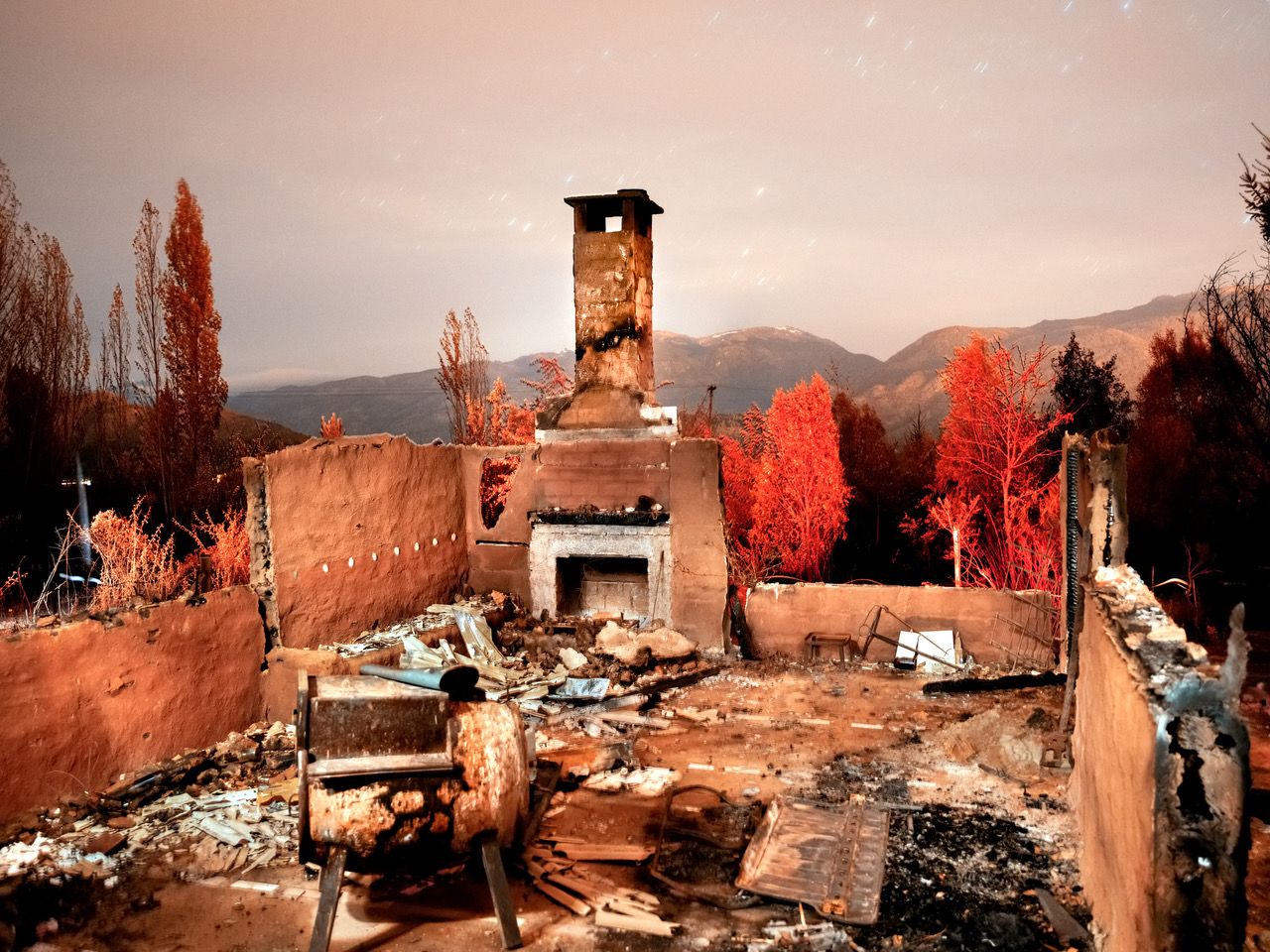
Sometimes other people’s stories are told but this time it touches you very closely, how does the focus change?
When you consider telling a story from yourself, you can have the freedom to experiment and tell the story more freely than if you are trying to be a banner of truth. We photographers already experience that we are constantly skewing reality. We see it in practice, everyone knows it. There is something in which I believe a lot, which is the human drama. I like to relate to people in a close way. What helps me to justify the way I tell the stories is to establish a very close bond, almost one of friendship, with the people I am photographing. From time to time I begin to create images with the form that they give me. That is the way I feel empowered to talk about the story, rather than tell it superficially.
Here is a story because I came to this territory to establish myself, the fire crosses me and I feel that I have, somehow, the possibility of telling in first person what it feels like to be here and now.
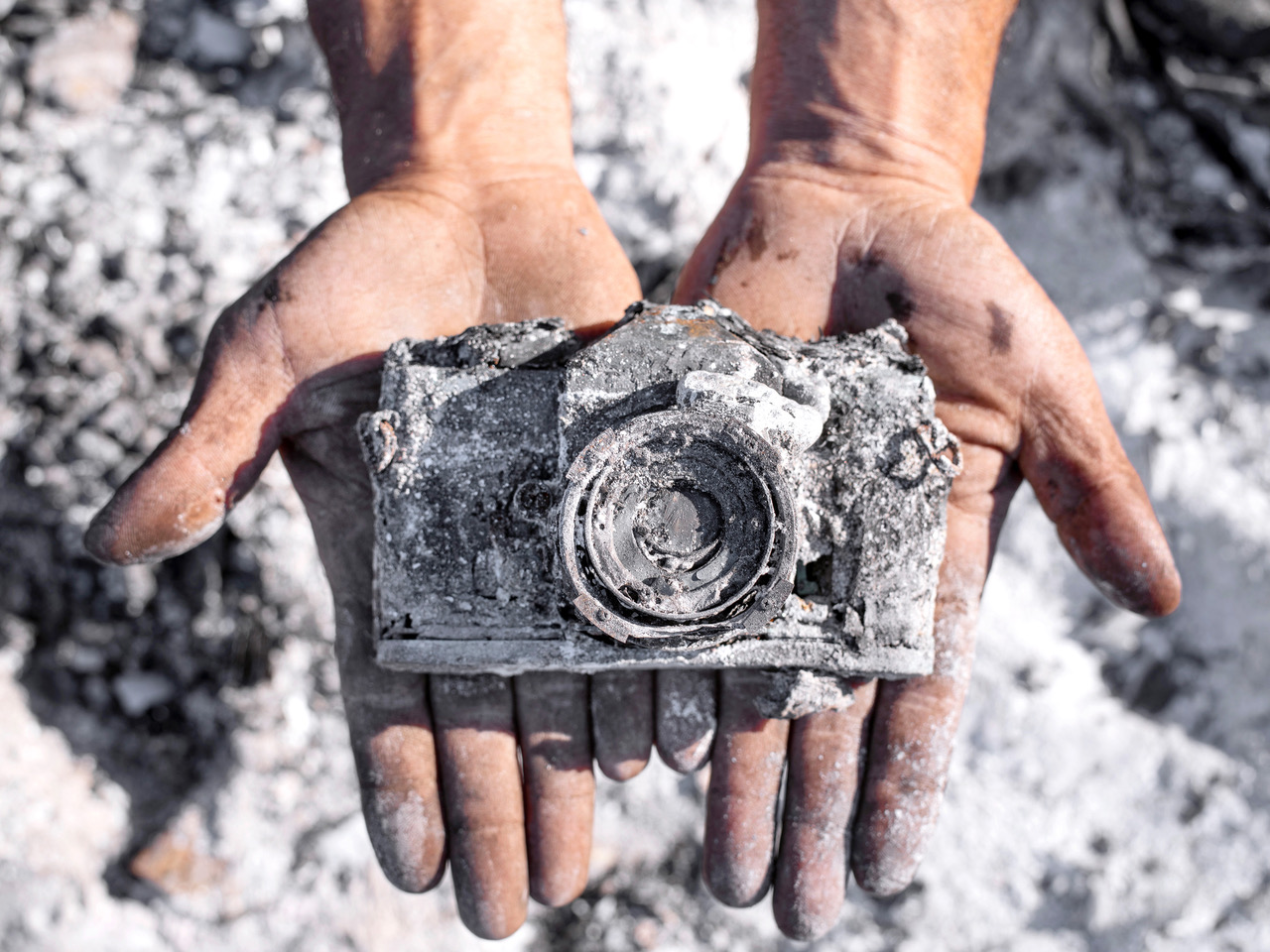
Alejandro Chaskielberg was trained as Director of Photography at the ENERC (National Institute of Cinema and Audiovisual Arts of Argentina) and worked in various parts of the world, such as Tigre Delta (Argentina), Surinam, Kenya, Italy and Japan. He published three photobooks (La Creciente, Otsuchi Future Memories and Laberinto) and received the Iris de Oro – World Photographer of the Year award in 2011, the All Roads Photography awarded by the National Geographic Society, the BURN Emerging Photographer Grant from the Magnum Foundation, the RM 5th Iberoamerican Photobook Award and the Leopold Godowsky Jr. Award, among others. His photographic work was presented at the Brighton Biennial 2009 and exhibited at festivals around the world.
